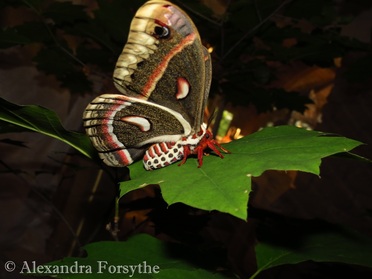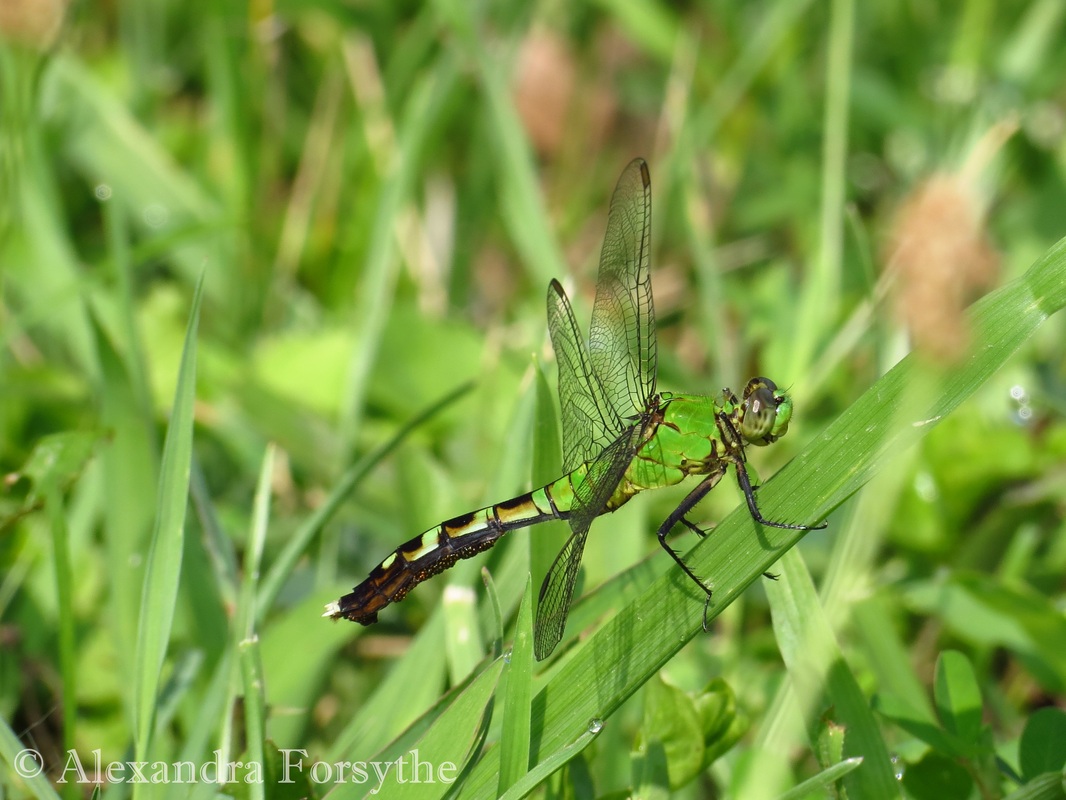 Cecropia Moth
Cecropia Moth It’s easy to become captivated with birds. They are amazing animals! Who hasn’t dreamed of being able to fly like an eagle? Plus, they’re easy to see; birds are all around us. However, if we look a bit closer to the ground we can see many of those same wonderful qualities in much smaller creatures: butterflies, moths, dragonflies and damselflies.
I attended the second annual Mothapalooza conference this weekend. The focus is on moths, but it also covers butterflies, dragonflies, damselflies and birds. What a wonderful experience, due in large part to the Herculean efforts of the organizer, Mary Ann Barnett. There was something for everyone from night owls to early birds and novices to experts. The people were so friendly it felt like I had known them for a long time even though we just met.
Moths were the stars of the show, and rightly so. Compared to butterflies, we know very little about moths, but we’re learning much more thanks to the efforts of David Wagner, Jim McCormac and other experts. What we do know is that moths are important pollinators and are crucial to a sustainable ecosystem. All of us are concerned about the decline of honeybees and the effect of that decline on our food supply, but attention must be paid to the other pollinators, as well, including the nocturnal pollinators. While they deserve respect for the services they provide for us, it’s hard not to smile when you learn about some of their unique adaptations. Many moths practice mimicry to perfection, appearing as bird droppings or even imitating a spider so well that spiders are intimidated by it. Some of them can cause quite a bit of pain to anyone who touches them, while others have developed effective clubs with which to battle predators. That’s pretty clever for a fuzzy insect or squishy caterpillar!
While moths are usually thought of as fuzzy and cute, dragonflies are often thought of as the tigers of the pond. Despite their delicate appearance, they are expert hunters valued for their ability to control mosquito populations. They are among the most successful predators on the planet. Most predators are satisfied if they catch half of the prey they pursue. Not so with the dragonfly. Studies show that they can snag their prey over 95% of the time. They can reach speeds of 30 mph, and their vision may be the best in the insect world. Some of them migrate as far as birds: 10,000 miles per year!
Being a birder, I of course went on the birding field trips during the conference. However, since the leaders of the trips and other attendees were all experts in a variety of fields from botany to entomology, there was always something to admire and a multitude of opportunities in which to learn. If we didn’t see a bird, we’d cast our gazes a few feet downward to discover other treasures. Never a dull moment!
I learned a lot during Mothapalooza. More importantly, I made many new friends with a breathtaking wealth of knowledge. I had a fantastic time and I am looking forward to next year!
I attended the second annual Mothapalooza conference this weekend. The focus is on moths, but it also covers butterflies, dragonflies, damselflies and birds. What a wonderful experience, due in large part to the Herculean efforts of the organizer, Mary Ann Barnett. There was something for everyone from night owls to early birds and novices to experts. The people were so friendly it felt like I had known them for a long time even though we just met.
Moths were the stars of the show, and rightly so. Compared to butterflies, we know very little about moths, but we’re learning much more thanks to the efforts of David Wagner, Jim McCormac and other experts. What we do know is that moths are important pollinators and are crucial to a sustainable ecosystem. All of us are concerned about the decline of honeybees and the effect of that decline on our food supply, but attention must be paid to the other pollinators, as well, including the nocturnal pollinators. While they deserve respect for the services they provide for us, it’s hard not to smile when you learn about some of their unique adaptations. Many moths practice mimicry to perfection, appearing as bird droppings or even imitating a spider so well that spiders are intimidated by it. Some of them can cause quite a bit of pain to anyone who touches them, while others have developed effective clubs with which to battle predators. That’s pretty clever for a fuzzy insect or squishy caterpillar!
While moths are usually thought of as fuzzy and cute, dragonflies are often thought of as the tigers of the pond. Despite their delicate appearance, they are expert hunters valued for their ability to control mosquito populations. They are among the most successful predators on the planet. Most predators are satisfied if they catch half of the prey they pursue. Not so with the dragonfly. Studies show that they can snag their prey over 95% of the time. They can reach speeds of 30 mph, and their vision may be the best in the insect world. Some of them migrate as far as birds: 10,000 miles per year!
Being a birder, I of course went on the birding field trips during the conference. However, since the leaders of the trips and other attendees were all experts in a variety of fields from botany to entomology, there was always something to admire and a multitude of opportunities in which to learn. If we didn’t see a bird, we’d cast our gazes a few feet downward to discover other treasures. Never a dull moment!
I learned a lot during Mothapalooza. More importantly, I made many new friends with a breathtaking wealth of knowledge. I had a fantastic time and I am looking forward to next year!

 RSS Feed
RSS Feed
